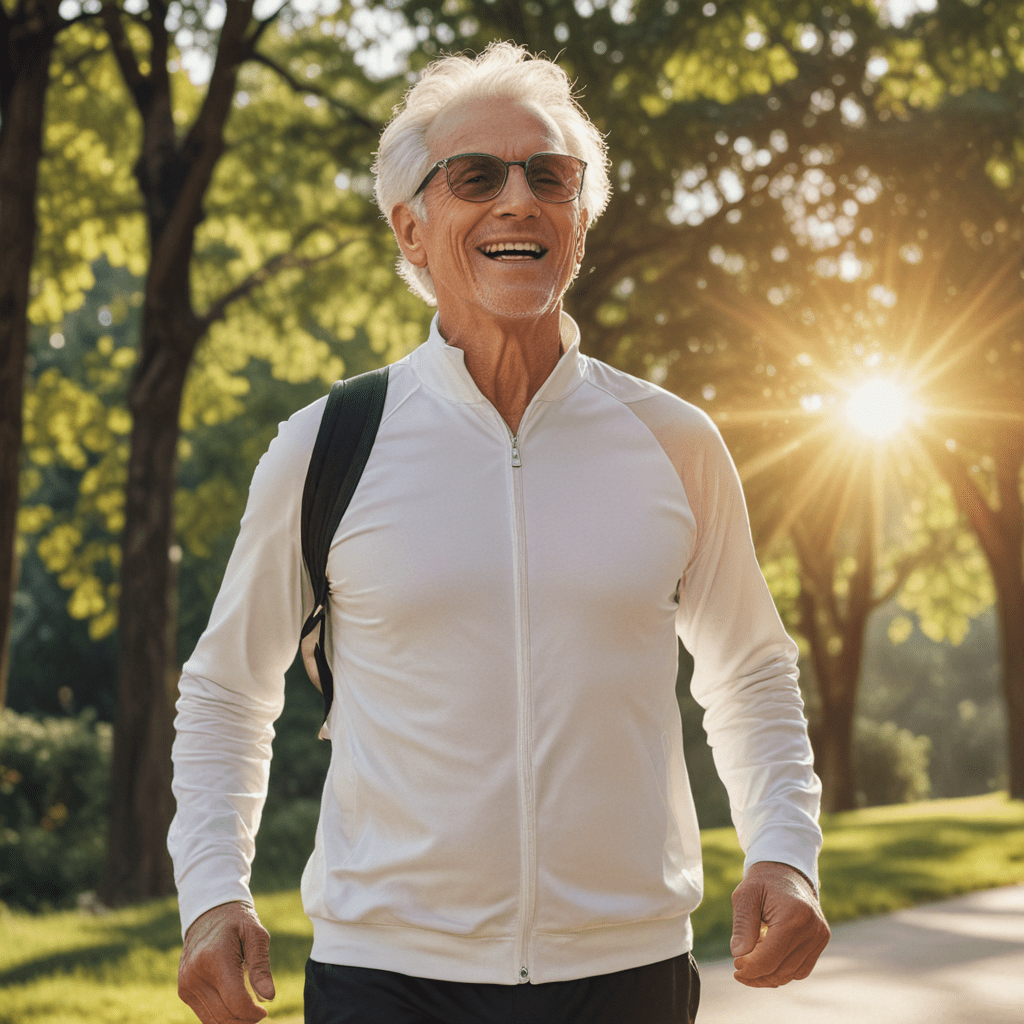
Benefits of Exercise Sunlight for Seniors: Importance of Vitamin DIntroduction
As we age, our bodies undergo several changes, including a decline in our ability to absorb and produce vitamin D. Vitamin D is an essential nutrient that plays a crucial role in overall health, particularly for seniors. One of the most effective ways to obtain vitamin D is through controlled sun exposure. Exercise sunlight, which combines regular physical activity with sun exposure, offers a range of benefits for seniors, especially regarding vitamin D levels.
Aging and the Need for Vitamin D
With age, our bodies become less efficient at synthesizing vitamin D from sunlight. Additionally, seniors tend to spend less time outdoors, further reducing their exposure to natural vitamin D sources. This decreased intake can lead to vitamin D deficiency, which is a common problem among the elderly population. Vitamin D deficiency can contribute to a variety of health issues, including osteoporosis, muscle weakness, and cognitive decline.
Sunlight as a Natural Source of Vitamin D
Sunlight is the body's primary source of vitamin D. When ultraviolet B (UVB) rays from the sun interact with the skin, they trigger the production of vitamin D3. Unlike vitamin D2, which is found in some foods and supplements, vitamin D3 is the most biologically active form and is more efficiently absorbed by the body. Regular sunlight exposure allows the body to naturally produce and maintain adequate vitamin D levels.
The Role of Vitamin D in Bone Health
Vitamin D is essential for maintaining strong and healthy bones. It aids in the absorption of calcium, a vital mineral for bone formation and repair. Sufficient vitamin D levels help reduce the risk of osteoporosis, a condition characterized by weak and brittle bones that are more susceptible to fractures. Exercise sunlight can help seniors meet their vitamin D needs, supporting bone health and reducing the risk of age-related bone disorders.
6. Vitamin D's Impact on Muscle Function
Vitamin D plays a crucial role in maintaining muscle strength and function. It helps the body absorb calcium, which is essential for muscle contraction. Adequate vitamin D levels can improve muscle strength and power, especially in older adults. Exercise sunlight can help seniors meet their vitamin D needs, supporting muscle function and reducing the risk of age-related muscle loss.
7. Exercise Sunlight and Improved Cognitive Function
Vitamin D is essential for cognitive health. It supports brain function and may help protect against age-related cognitive decline. Exercise sunlight can help seniors increase their vitamin D levels, potentially improving cognitive function and reducing the risk of developing dementia and Alzheimer's disease.
8. Sunlight's Effect on Sleep Quality
Vitamin D has been shown to improve sleep quality. It helps regulate the body's circadian rhythm, which is responsible for sleep-wake cycles. Exercise sunlight can help seniors increase their vitamin D levels, potentially improving sleep quality and reducing the risk of insomnia.
9. Exercise Sunlight and Mood Regulation
Vitamin D has mood-regulating properties. It helps increase the production of serotonin, a neurotransmitter that is associated with positive mood and well-being. Exercise sunlight can help seniors increase their vitamin D levels, potentially improving mood and reducing the risk of depression.
10. Safety Precautions and Considerations
While exercise sunlight is beneficial, it is essential to take precautions to avoid the harmful effects of excessive sun exposure. Seniors should follow these guidelines:
- Limit sun exposure to short periods, especially during peak hours (10 am to 4 pm).
- Use sunscreen with a Sun Protection Factor (SPF) of 30 or higher.
- Wear protective clothing, such as hats and sunglasses.
- Drink plenty of fluids to stay hydrated.
- Consult a healthcare professional if you have any underlying health conditions that may be affected by sun exposure.
Conclusion
Exercise sunlight is an effective way for seniors to improve their vitamin D levels. Vitamin D is crucial for bone health, muscle function, cognitive function, sleep quality, and mood regulation. By incorporating controlled sun exposure into their daily routines, seniors can reap the numerous benefits of exercise sunlight and maintain their overall health and well-being.
FAQs
Can I get enough vitamin D from diet alone?
While some foods contain vitamin D, it is challenging to obtain sufficient amounts from diet alone. Sunlight is the most effective natural source of vitamin D.How much sunlight exposure do I need?
The amount of sunlight exposure required varies based on factors such as skin tone, location, and time of year. Aim for short periods of unprotected sun exposure (10-15 minutes) 2-3 times per week.What if I live in a climate with limited sunlight?
If natural sunlight is not readily available, consider using a vitamin D supplement or consulting with a healthcare professional about alternative sources.
Is it safe to get sunlight exposure with sunscreen?
Sunscreen can block the absorption of vitamin D, but it is essential for protecting the skin from harmful UV rays. Use sunscreen with an SPF of 30 or higher while limiting sun exposure.Can I overdose on vitamin D from sunlight?
It is unlikely to overdose on vitamin D from sunlight alone. However, excessive sun exposure can lead to sunburn and other skin damage.
